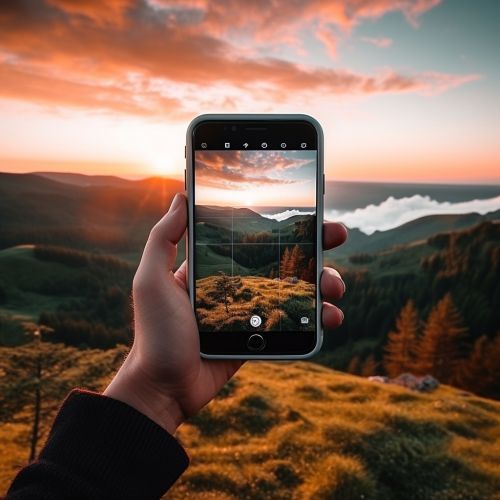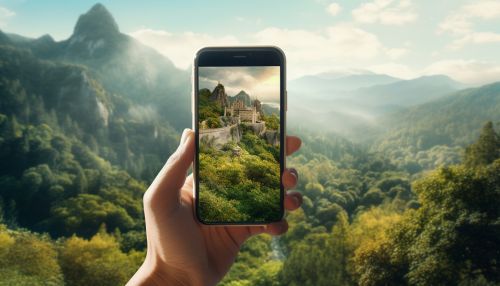Mobile photography
Introduction
Mobile photography refers to the creation of photographs with a mobile phone, which first became widespread with the introduction of the camera phone. It is a form of photography that utilizes mobile devices as the primary tool for capturing and sharing images. This form of photography has grown exponentially over the past decade due to advancements in mobile technology, the proliferation of social media platforms, and the increasing demand for visual content.


History
The history of mobile photography can be traced back to the early 2000s when the first camera phones were introduced. The Nokia 7650, released in 2002, was one of the first mobile phones to include a built-in camera. However, the quality of images produced by these early devices was relatively poor compared to traditional digital cameras.
Over the years, advancements in mobile technology have led to significant improvements in the quality of images that can be captured with a mobile device. The introduction of smartphones, such as the iPhone in 2007, revolutionized mobile photography by providing users with high-quality cameras and a range of photography apps.
Technological Advancements
Technological advancements have played a crucial role in the evolution of mobile photography. The development of high-resolution sensors, advanced lens systems, and sophisticated software algorithms have significantly improved the image quality produced by mobile devices.
One of the key advancements in mobile photography has been the introduction of image sensors with higher pixel counts. This has allowed for the capture of more detailed images, even in low light conditions. In addition, the development of advanced lens systems, such as wide-angle and telephoto lenses, has expanded the range of photographic possibilities available to mobile photographers.
Software advancements have also played a significant role in the evolution of mobile photography. The introduction of sophisticated image processing algorithms has improved the ability of mobile devices to capture high-quality images in a variety of lighting conditions. In addition, the development of a wide range of photography apps has provided mobile photographers with a suite of tools for editing and sharing their images.
Impact on Photography
Mobile photography has had a profound impact on the field of photography as a whole. It has democratized photography by making it accessible to a wider audience. With a camera now in the pocket of nearly every individual, the ability to capture and share images has become a ubiquitous part of modern life.
The rise of mobile photography has also led to the emergence of new photographic styles and genres. For example, the popularity of selfies and photobombing can be attributed to the proliferation of mobile devices with front-facing cameras.
In addition, mobile photography has transformed the way images are shared and consumed. The advent of social media platforms, such as Instagram and Snapchat, has provided a platform for the sharing of mobile photographs, leading to the emergence of a new form of visual communication.
Techniques and Practices
There are several techniques and practices that are unique to mobile photography. One of the key aspects of mobile photography is the use of natural light. Due to the small size of the image sensors in mobile devices, they often perform best in well-lit conditions. Therefore, mobile photographers often rely on natural light to create their images.
Another important aspect of mobile photography is composition. Due to the limitations of mobile devices, such as the lack of optical zoom and limited depth of field, mobile photographers often need to pay careful attention to the composition of their images. This can involve considering elements such as the rule of thirds, leading lines, and the use of negative space.
In addition, mobile photography often involves the use of photography apps for editing and enhancing images. These apps can provide a range of tools for adjusting exposure, color balance, and other aspects of an image. They can also provide a range of filters and effects that can be used to create a unique look and feel for an image.
Future Trends
The future of mobile photography is likely to be shaped by ongoing advancements in mobile technology. Future trends may include the development of mobile devices with even higher resolution sensors, more advanced lens systems, and more sophisticated image processing algorithms.
In addition, the rise of augmented reality (AR) and virtual reality (VR) technologies could open up new possibilities for mobile photography. For example, AR could be used to provide real-time information about a scene, such as the best angles for a shot or the optimal settings for a particular lighting condition. VR could be used to create immersive photographic experiences, such as virtual photo tours or interactive photo galleries.
